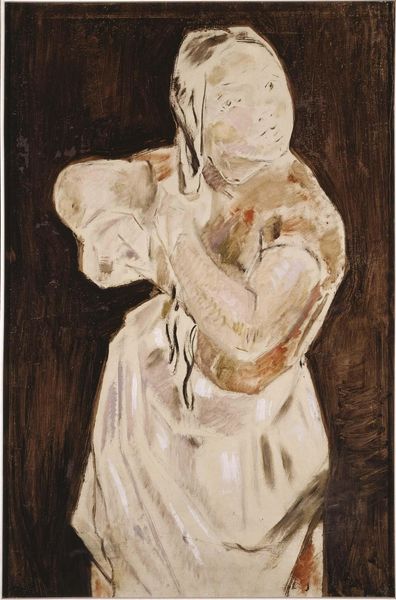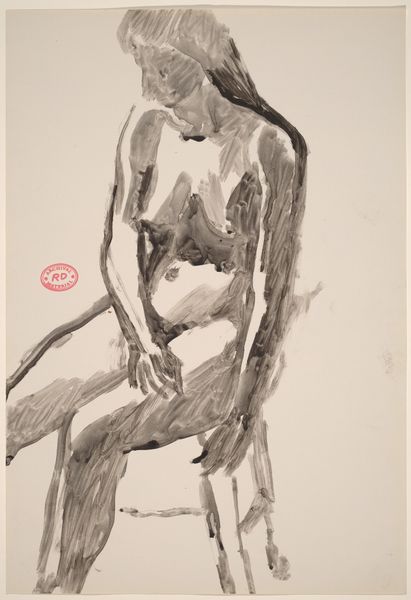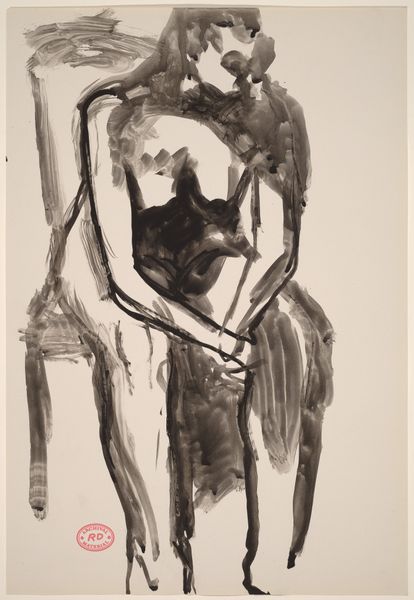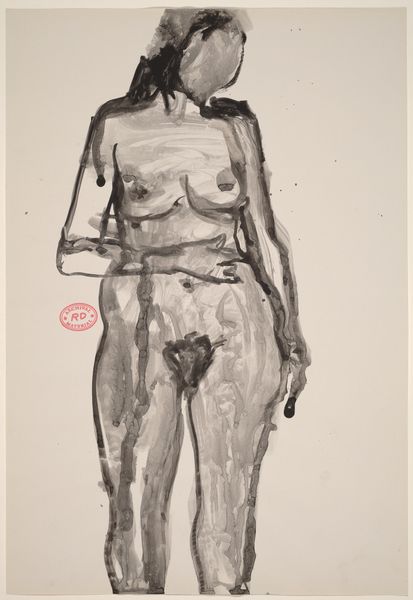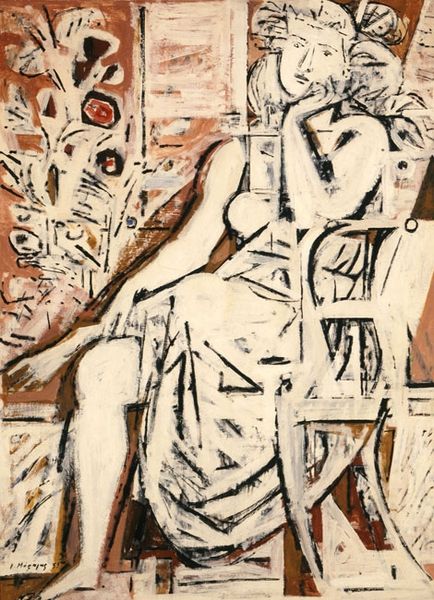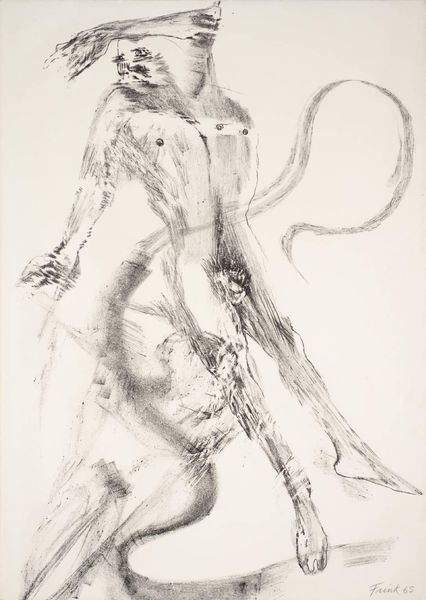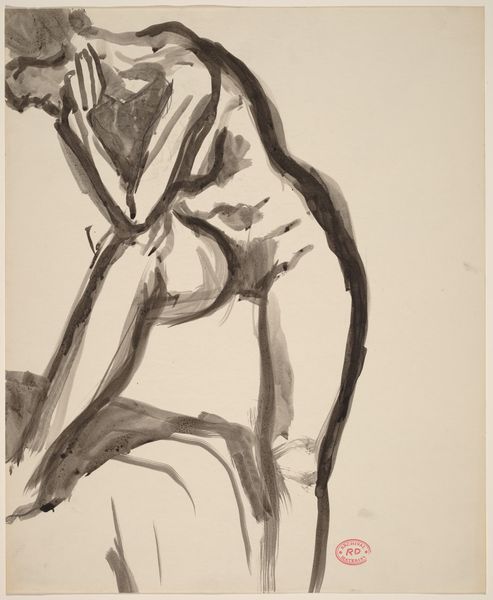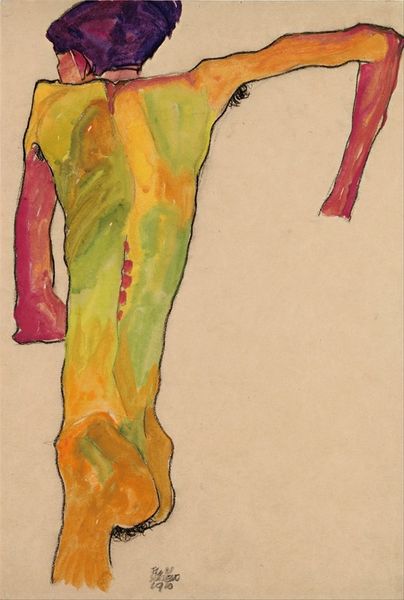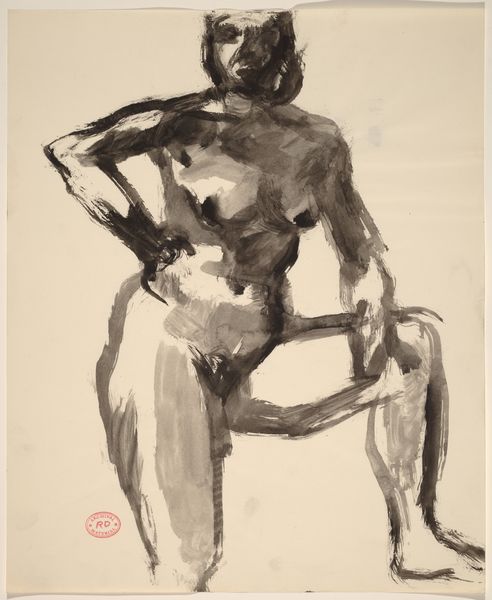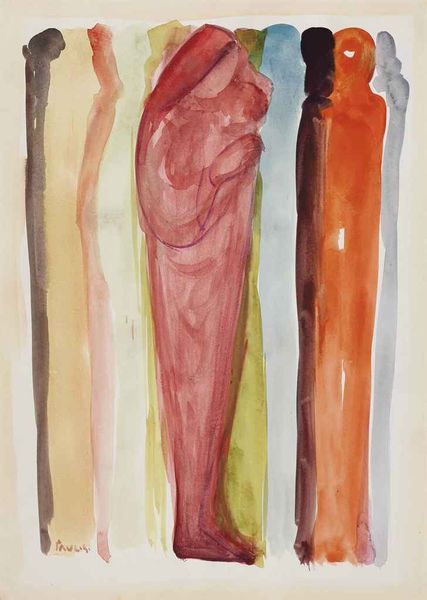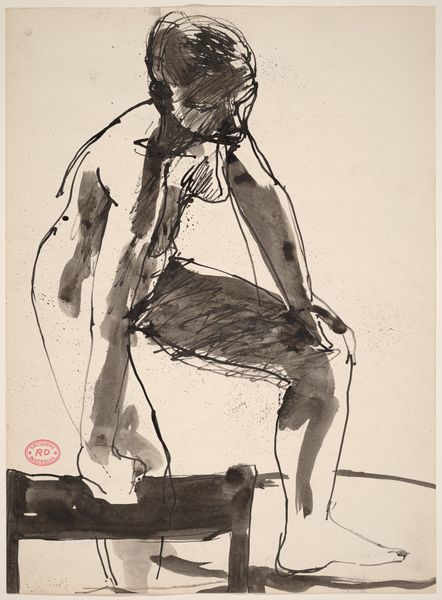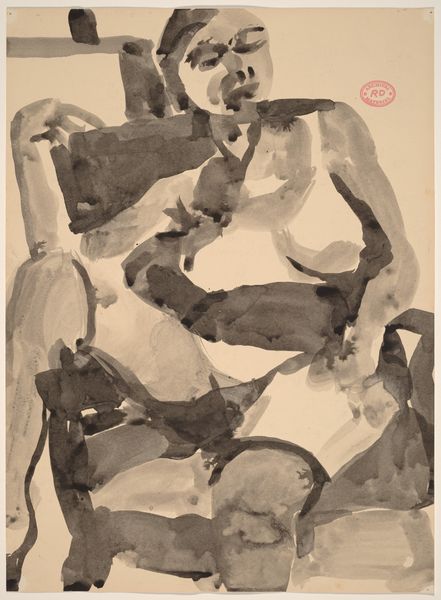
Dimensions: support: 1397 x 451 mm
Copyright: © Estate of David Smith/DACS, London/VAGA, New York 2014 | CC-BY-NC-ND 4.0 DEED, Photo: Tate
Curator: David Smith's "Painting 1964," held at the Tate, confronts us with a human figure rendered in broad strokes. It has an immediacy, wouldn't you agree? Editor: It strikes me as monumental, really, even though it's not that large. The heavy contours feel almost totemic. Curator: Smith, primarily a sculptor, brings that sensibility here, I think. The raw paint handling almost feels carved, like an ancient statue unearthed. Editor: Definitely a primal energy at play. Given Smith's interest in mythology, could this be a deliberate allusion to archaic female forms? Curator: It's suggestive. The fragmented head evokes ancient fertility figures where the face is often less important than the body's symbolic power. Editor: Smith was working during a period hungry for new visual languages. This piece feels like an active negotiation between the classical and the modern. Curator: Indeed, by reinterpreting archaic imagery, Smith perhaps hoped to reconnect with something essential about the human experience, something beyond the purely contemporary. Editor: It leaves me pondering how we, even now, constantly recast old symbols to make new meanings.
Comments
Join the conversation
Join millions of artists and users on Artera today and experience the ultimate creative platform.
tate 6 months ago
⋮
Smith was trained as a painter and stated that his 'sculpture grew from painting'. Many of his sculptures have painted surfaces. In the last two years of his life he painted a series of female figures, using friends as models. He also executed many drawings on this theme. Most of the figures in this series are strictly linear, in black. Very few are modelled in broad areas of colour such as this one. Smith remained interested in the figure throughout his career. The emphasis on verticality in this painting, stressed by the narrowness of the canvas, recalls his upright, abstract 'sentinel' sculptures of the late 50s. Gallery label, September 2004
